The Kruger Park is one of the last bona fide paradises - a magnificent expanse of wilderness roamed by abundant wildlife.
Need Advice?Safari enthusiasts have diverse accommodation and package options, catering to various budgets and interests.
An itinerary suited to your requirements is sure to be found.
Properties range from plush personal lodges to extravagant safari palaces.
National park camps offer comfortable accommodations on budget-friendly safaris.
You can choose from a wide selection of packages focused only on the park or combined with other highlights in Southern Africa.
The private game reserves in South Africa are some of the most popular luxury safari destinations on the African continent.
The sprawling two million-hectare park offers every opportunity for an unforgettable, rewarding game-viewing experience.
We've curated the most essential – and interesting – material for your convenience and pleasure.
Here you will find information about some lesser-known activities, locations, and wildlife in Kruger.
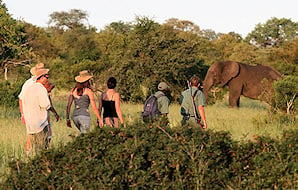
Various wilderness trails crisscross the quieter regions of the park, where private vehicles are not allowed. You'll spend a few days on the trail, getting close to nature and learning more about the animals you encounter. Accommodation is basic but comfortable.
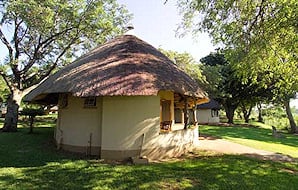
These wild outposts have discarded luxuries for a more intimate affair with nature. No restaurant (or other) facilities are available on-site, so guests at these camps need to arrive fully equipped for their rustic getaway.
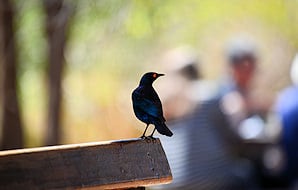
Many casual picnic spots are scattered throughout the main arteries of Kruger Park. They are ideal for pit stops or lunch while you are out and about game viewing in the park with your African Sky guide.
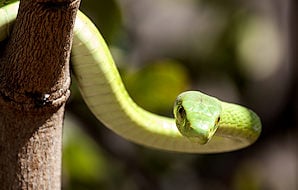
Kruger is home to several snake species. Though most people detest these reptiles, many safari enthusiasts are fascinated by snakes and their role in the ecosystem.
Kruger Park is home to the 'Big Five' and the most significant diversity of other animal species of any national park in Africa.
Other AnimalsWhen staying in a private game reserve or at a lodge located on a private concession in the Kruger National Park, morning and afternoon game drives are conducted on open 4x4 vehicles by experienced local rangers and trackers. These vehicles are equipped to make your game drive comfortable and offer maximum photographic opportunities.
If you are staying at a rest camp in the national park, game drives are conducted in air-conditioned vehicles by African Sky guides. These game drives have the advantage of not being limited to the morning or afternoon and can often last most of the day - depending on your preference. An air-conditioned vehicle offers much greater comfort on these extended game drives that cover much ground.
Visiting this wild corner of the continent means some wild dining options are also available, which will appeal particularly well to meat lovers and adventurous eaters. Trying unique and traditional fare is undoubtedly part of a rewarding travel experience.

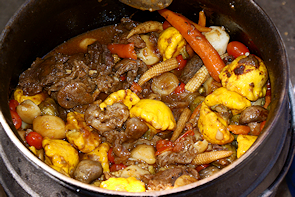


Four airports serve the Kruger National Park; Nelspruit and Skukuza in the south, Hoedspruit in the central part of Kruger, and Phalaborwa in the north. Scheduled charter flights are available to most of the private lodges. The flight duration from Johannesburg ranges from about 50 minutes to an hour and a half.
Traveling overland from Johannesburg to the Southern and central Kruger National Park involves between four and six hours. We recommend that anyone who visits the park on an overland safari enters the park through Malelane, Crocodile Bridge, Paul Kruger, Phabeni, Orpen, or Phalaborwa gates.
Spring and summer in Kruger can become uncomfortably hot, reaching record temperatures as high as 40 °C but averaging at a maximum of 33 °C and a minimum of 16 °C between September and March. The chance of contracting malaria is also much higher during this period, as the rainfall draws mosquitoes.
The best time to visit the park is during the autumn/winter period between April and August when temperatures are at their lowest. The dry season lures animals to water sources, which provide great game-viewing opportunities. The temperature is still relatively high during this period, with average maximums ranging from 26 °C to 29 °C, depending on the month and location in the park. Minimums fluctuate between 6 °C and 15 °C.
| Gate | Phone Number |
| Crocodile Bridge | +27 (0)13 735 6012 |
| Kruger Gate | +27 (0)13 735 5107 |
| Malelane | +27 (0)13 735 6152 |
| Numbi | +27 (0)13 735 5133 |
| Orpen | +27 (0)13 735 0237/0238 |
| Pafuri | +27 (0)13 735 5574 |
| Phabeni | +27 (0)13 735 5890 |
| Phalaborwa | +27 (0)13 735 3547 |
| Punda Maria | +27 (0)13 735 6870 |
Entrance Gates open at 05:30 from October to March and 06:00 from April to September.
Camp Gates Opens at 04:30 during December, January, and February. In February, March, and October, the opening time is 05:30. From April to September, camp gates open at 06:00.
All Gates close at 18:30 from November to February, at 18:00 during March, April, August, and September. In May, June, and July, the closing time is 17:30.
| Blue Wildebeest | 6400 to 13100 |
| Buffalo | 37130 |
| Burchell’s Zebra | 23700 to 35 300 |
| Cheetah | 120 |
| Crocodile | 4420 |
| Eland | 460 |
| Elephant | 13750 |
| Giraffe | 6800 to 10 300 |
| Greater Kudu | 11 200 to 17300 |
| Hippopotamus | 3100 |
| Impala | 132 300 to 176 400 |
| Leopard | 1000 |
| Lion | 1620 -1750 |
| Mountain Reedbuck | 150 |
| Nyala | >300 |
| Reedbuck | 300 |
| Roan Antelope | 90 |
| Sable Antelope | 290 |
| Spotted Hyena | 5340 |
| Tsessebe | 220 |
| Warthog | 3100 to 5700 |
| Waterbuck | 3100 to 7800 |
| Wild Dog | 120 |
All who visit the park should consult their physicians about anti-malarial prophylactics. The malaria risk in Kruger is highest in the far south and the far north, but the whole park falls within a malaria risk region.
Whether, close encounters with wildlife are safe, as well as general safety, is a concern to many foreign visitors. Animals can be intimidating, especially the Big 5. You can rely on experienced rangers with in-depth knowledge of animal behavior. Though infrequent, there have been a couple of incidents over the years when animals have caused injury or death. However, this has never occurred on any safari operated by African Sky since 1998.

Kruger National Park is an excellent arena for close encounters of the four-legged kind. It is a haven where critically endangered and vulnerable species, such as the African wild dog, black rhinoceros, and cheetah, can still be viewed in their natural habitat. The big cats prosper, with around 2000 lions and 2000 leopards residing in the park, ensuring that the average game viewer can quickly tick them off their checklist.
Elephants occur in abundance, with herds expanding so much in recent years (almost 12,000 elephants currently call Kruger home) that many groups have had to relocate to protect the ecosystem. White rhinos are present in lesser numbers but are regularly spotted throughout the park. Solid herds of African buffalo frequently blacken the gold sweep of the savanna, emerging from the bush in their thousands.
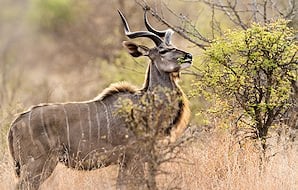
Large herbivores such as Burchell's zebra, blue wildebeest, giraffe, kudu, waterbuck, and impala prevail on every terrain, while eland, nyala, and smaller antelope are rarer finds. Lesser mammals include spotted hyenas, black-backed jackals, honey badgers, genets, meerkats, mongoose, warthogs, bush pigs, porcupines, baboons, and Vervet monkeys. Dams and rivers teem with hippo and crocodile populations.

With over 500 feathered species, Kruger is a birder's paradise. From the delightful lilac-breasted roller to the majestic Bateleur eagle, even wildlife enthusiasts will be charmed by the kaleidoscope of birdlife after the larger game. A few of the park's birds belong to a group called 'The Big Six.' They include the tremendous Lappet-faced vulture, the snow-bellied Martial eagle, the eccentrically dressed saddle-billed stork, the low-stalking Kori bustard, the comically odd ground hornbill, and the rarely spotted Pel's fishing owl.
In 1898, the initiative of Jakob-Louis van Wyk, R.K. Loveday, and President Paul Kruger to establish a 'government wildlife park,' the area between the Sabie and Crocodile rivers, was proclaimed the Sabie Game Reserve. This area now comprises the Southern third of the modern park. The first official warden, Scottish-born Major James Stevenson-Hamilton, was appointed by Sir Godfrey Lagden in 1902. Harry Wolhuter and Thomas Duke became the Sabie Game Reserve's first rangers, posted at present-day Pretoriuskop and Lower Sabie. At the same time, Stevenson-Hamilton operated headquarters at the Sabie Bridge (present-day Skukuza).
In 1903, the Shingwedzi Game Reserve (which now forms part of northern Kruger) was proclaimed and added to Stevenson-Hamilton's list of responsibilities. He appointed Major AA Fraser as the reserve's first head ranger in 1904.
In 1926, the National Parks Act was passed. The reserves were fused and expanded into forging the Kruger National Park. The first three tourist cars accessed the park in 1927, with numbers swelling to 180 in 1928 and 850 in 1929. In the 1940s, the Greek royal family and King George II visited Kruger.
Vestiges of yesteryear survive throughout the park, from the Albasini ruins (the original home of the area's first European settler) near the Phabeni gate and prospectors' graves in the south to the site of Wolhuter's lion attack and the Masorini archaeological site in the north. From the near-extinction of several species to the ongoing battle against poaching, Kruger Park and its champions have braved many challenges in its evolution toward the distinguished reserve as it exists today.
Stretching 380 km north to south and averaging 60 km east to west, the wild expanse of the Kruger National Park may almost be considered a province in its own right. Two rivers are natural borders to the park; the Limpopo River in the north and the Crocodile River in the south. Kruger's western boundary runs across the Limpopo and Mpumalanga provinces, while Mozambique's Limpopo National Park lies to the east.
A few significant rivers run west to east through the park, starting with the Sabie River in the south, the Olifants and Letaba rivers in the heart of the park, and the Luvuvhu in the far north. These rivers replenish the numerous smaller streams and dams throughout the park. Depending on the region, rainfall varies from a maximum of 720 mm to a minimum of 400 mm per annum.
Vegetation digresses throughout Kruger, creating a stirring medley of settings for game sightings. Rock figs and bushwillows star the southwest, with kiaat and silver-cluster leaf lacing the Pretoriuskop area. The general south is full of sickle bush and thorn trees, ranging from knob thorn to scented and sticky thorn. Shady tamboti trees and the juicy-fruited marula trees cloak the area as well. A mopane mantle covers the earth from the park's heart to the far north. Rare tree species occur in the northern Pafuri and Punda Maria regions; an area also weighted in ancient baobab trees.
Around seven geological substructures pads the bushy carpet of the park. The west is generally bedded in granite, with rolling plains sprouting from the sandy earth. Coarse, dark gabbroic intrusions also pepper this region, occurring sporadically in the savanna. Karoo sedimentary rock stretches north to south in an axial girdle, yielding fine sand and salty clay soils. The east of the park is stained with ruddy basalt, climbing into the rhyolite base coat of the Lebombo Mountains' stony bulges toward Mozambique.